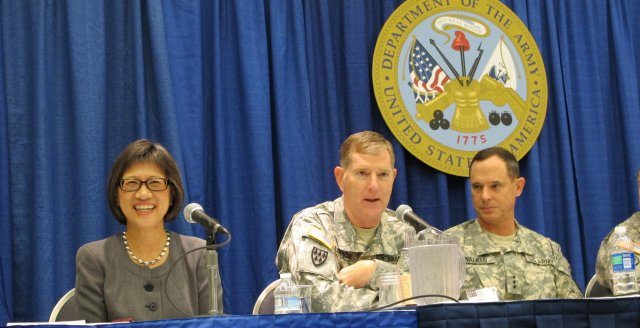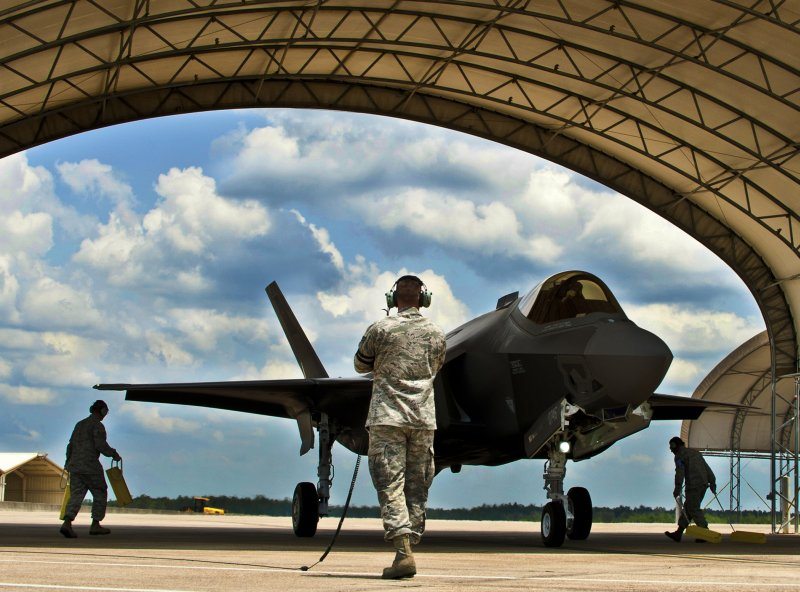The U.S. Army approach to modernization seeks to blend a clear, uncompromising emphasis upon locating, developing and harvesting the best emerging technologies able to help Soldiers in combat with a stepped-up effort to pursue affordability and consider cost as its own “independent” variable in the acquisition decision-making process, service leaders told attendees Oct. 11, at the 2011 Association of the United States Army Annual Meeting and Exposition held in Washington, D.C.
Heidi Shyu, acting assistant secretary of the Army for Acquisition, Logistics and Technology, or ASA (ALT), said the Army is making progress with its Better Buying Power program, an approach designed to build affordability metrics, cost savings and cost avoidance into the acquisition and decision making processes.
“We’re focusing on Better Buying Power and on a monthly basis we are identifying cost savings on our programs. Affordability and efficiency are huge areas we are focusing on,” Shyu explained. “We’re assessing different types of contracts for programs and asking in many cases, is this the appropriate type of contract? We are changing the culture and focusing on team work and collaboration. We are focusing on affordability and efficiency across multiple organizations to figure out how we can be more efficient.”
As the Army’s Acquisition Executive, Shyu oversees billions in service acquisition dollars with a mind to maximizing efficiency and succeeding in delivering needed equipment to Soldiers in combat. The Army has harvested many lessons regarding its approach to acquisition over the last ten years of war, Shyu explained.
“We are changing acquisition because we have to. Think about the last 10 years; 10 years ago 9/11 happened and our threat really changed dramatically, so the stuff we were developing prior to that really changed. What we are facing now is a far more asymmetrical threat, an enemy that is very adaptive. We know there are mature technologies out there today,” she explained.
There are many instances where the Army succeeded in vital efforts to deliver urgently needed gear and equipment to Soldier in combat over the last ten years, said Lt. Gen Robert Lennox, deputy chief of staff, programs, G8. Lennox cited the rapid delivery of mine-Resistant, ambush-protected vehicles, or MRAPs, MRAP All-Terrain Vehicles, or M-ATVs, nine different iterations of body armor for the individual dismounted Soldier, improved sniper rifles, improvised explosive device-jamming devices and much more.
The new acquisition strategy includes encouraging more competition among vendors, focusing on developing and acquiring mature technologies, streamlining requirements, resources and acquisition practices at the front end of the process in order to establish achievable goals and clearly defined cost and schedule parameters.
“In order to be more agile, we know we need to emphasize mature technology and less cost. Our focus is to allow industry to help us determine what the requirements need to be,” Shyu said.
Shyu explained that the Army was eliminating redundancy, saving costs and improving its acquisition programs through Capability Portfolio Reviews, a service-wide review process which examines portfolios or groups of acquisition programs.
We’ve got together in the last six months and we have identified $11.4 billion in savings just by doing things better. We are looking at our Capability Portfolio Reviews. What we are doing there is instead of looking at one program at a time through a soda straw, we are looking across the portfolio. Do we have a balanced portfolio? It is at the right cost? Affordability is being considered as an independent variable,” Shyu said.
The Army’s Ground Combat Vehicle, or GCV, program provides an example of the services improved approach to acquisition, Shyu explained.
After the initial Request for Proposal, or RFP, was pulled back and subsequently re-issued in order to properly prioritize or “tier” vehicle requirements, the GCV program outlined clearly establish cost and schedule parameters seeking to deliver this new capability to Soldiers within seven years.
Part of the Army’s approach to its Ground Combat Vehicle procurement is to explore and assess whether any existing current force vehicles could be modified or adjusted to meet the requirements for the GCV program.
“The strategy with the Technology Development phase is to look at a broad Analysis of Alternatives. In parallel to that we are going to look at existing systems to see if any of them will be good enough to meet our capability for GCV,” Shyu said.
A thorough, comprehensive Analysis of Alternatives for the GCV will take about one year, Shyu added.
Shyu also said the Army is leveraging its Network Integration Evaluation, or NIE, exercises at White Sands Missile Range, N.M., as a way to harness, develop and deliver emerging technologies to Soldiers more effectively and more rapidly. The NIE exercises are semi-annual events wherein emerging technologies are both placed under evaluation and formally tested in some cases in order to assess what technologies can best serve Soldiers in combat.
The idea of the NIE is to reform the way IT is acquired by blending programs of record in some cases with commercially available systems able to fill a certain technological gap identified by the Army.
“If you look at the value of the NIE for the Army, it’s really about us getting our hands around the requirements, how to resource them and how to make things work in an operationally relevant environment such as White Sands Missile Range, N.M. It is powerful for us to do this. We are putting equipment in the hands of Soldiers and there’s great value in having feedback from Soldiers. This really allows the Army to better field a versatile, affordable mix of systems connected as the network in a way that our Soldiers can use to fight and win on the field of battle,” said Lt. Gen. Bill Phillips, military deputy to the assistant secretary of the Army for Acquisition, Logistics and Technology.
In essence, the NIE process is designed to expedite promising technologies to theater more quickly by ensuring they are properly evaluated and integrated before they are deployed.
“We can’t go through the sequential process which is what we did during the Cold War,” Shyu explained. “That process produces a product way too late. Our adversary isn’t going to wait.”
“We know we have to be more agile,” she said. “We are suppressing our appetite for requirements. For example, the Army and Marines have converged their requirements for the JLTV (Joint Light Tactical Vehicle). We are looking at requirements in terms of functional cost.”











